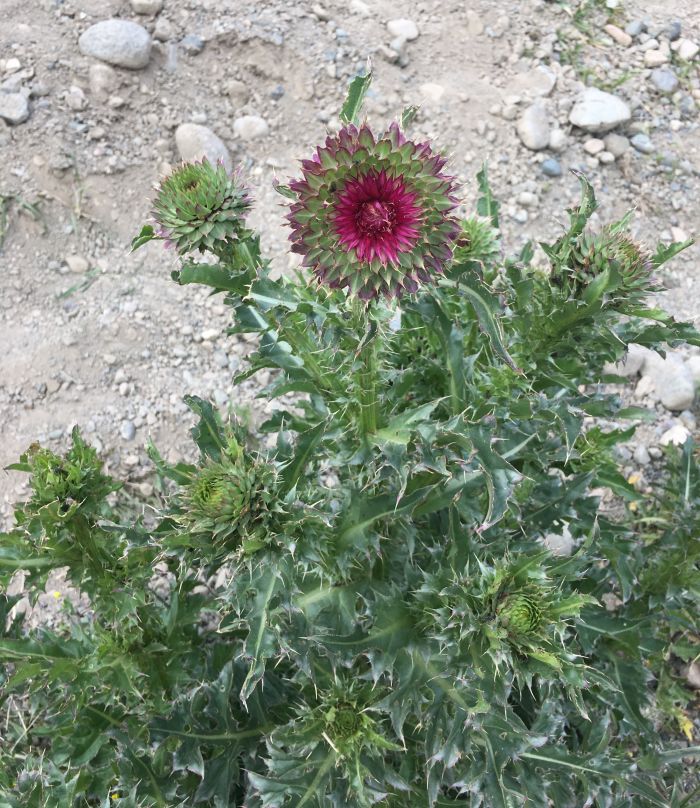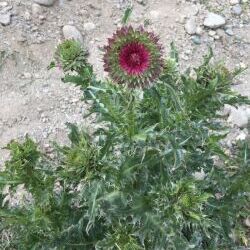
Priority: Contain
General: Thistle with large purple flowers that nod.
Height: Grows up to 2.4m tall.
Flowers: One flower grows on the top of the stem and nods. It is reddish-purple in colour and between 2.5-5cm in diameter.
Leaves/Stems: Stems are not spiny. There can be one stem or branched stems from one base. Leaves grow from the stem in an alternate pattern. The leaves are deeply lobed with spines on the edges. Edges of the leaves can appear white. They are 40cm long and 15cm wide. The way that the leaves attached to the stems, they have a winged appearance.
Root: Fleshy taproot.
Musk Thistle, Nodding plumeless thistle.
Edible Thistle and other native thistles.
Differences: Edible thistles have clusters of flowers but may be single. The leaves are generally shorter, only 10-16cm. Flowers also nod so this can cause people to think this native plant is the invasive nodding thistle.
Where did it come from? Originally from Eurasia and North Africa.
Where does it grow here? Nodding thistle prefers disturbed environments and well-drained soils. It can tolerate low rainfall environments. It is suspected that the Nodding Thistle sites in our region are actually native edible thistle.
Reproduction: By seed only.
When does it grow, flower & seed? Sprouts/bolts April-May. Flowers June-August. Seeds September-October. Seeds can germinate in the fall and go through the winter and bolt in April-May.
Spreads By: Wind, water, wildlife and livestock can spread this thistle.
Plant Type: Biennial.
- Reduces forage in pastures and it is unpalatable to livestock.
- It is very competitive so it can displace native plants in rangeland and cropland.
- Forms dense stands along roadsides and other disturbed areas.
- Review your property regularly for this species.
- Treatment Because this plant spreads primarily by seed, repeated mowing, cutting and handpulling can be used to stop the spread of an infestation. Remove small patches before it flowers & sets seed. Removal of small first year plants and the root crown of bolted plants is necessary for successful removal. They will bolt if they are not removed. Three biocontrol agents (2 weevils, 1 fly) have shown to reduce plant populations.
- Cover bare patches or disturbed soil by planting or seeding with non-invasives.
- Check areas where you have removed invasives for any new plants that year and in future growing seasons.
- Dispose of invasive plants responsibly. Bag them for disposal at the local landfill. Composting and burning is not recommended.
- Contact LRISS for specific treatment recommendations.
E-Flora BC: Electronic Atlas of the Flora of British Columbia.
Southern Interior Weed Management Committee. 2016. Invasive Plants of the Southern Interior BC. 86pgs.
